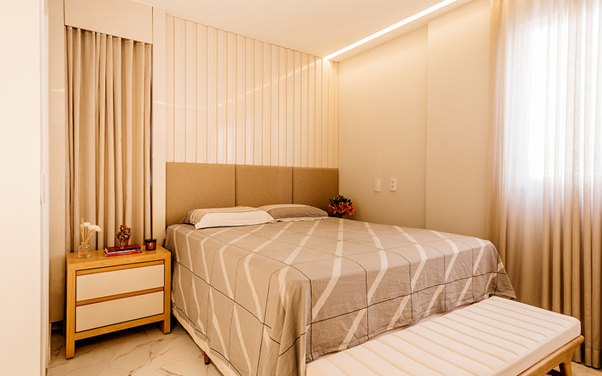6 Buying Mistakes to Avoid with Bed Frames and Memory Foam Mattresses

Comfort depends on how each part of the sleep setup works together. The right bed frame in Singapore should support airflow, alignment, and stability for your memory foam mattress. When the match is wrong, you feel heat, sag, and motion every night. Use the list below to avoid the most frequent mistakes and build a quieter, cooler, and longer-lasting foundation for rest.
1. Choosing The Wrong Foundation Type For Foam
Memory foam needs a firm, continuous base or closely spaced slats. Wide slats let foam dip between gaps, which strains the core and reduces support. A platform bed frame in Singapore with solid decking or slats no wider than six to seven centimetres apart keeps the memory foam mattress level from edge to centre. If your existing frame has wider spacing, add a bunkie board to create an even surface without changing the entire frame.
2. Ignoring Airflow And Heat Build-Up
Foam contours the body, which can trap warmth if the base blocks ventilation. A sealed box divan restricts airflow and makes a memory foam mattress feel warmer than intended. Prefer a ventilated platform or a slatted bed frame in Singapore that allows air to pass under the mattress. Pair that with a breathable protector and natural-fibre sheets so heat can disperse. Better airflow extends foam resilience and improves night-to-night comfort in humid weather.
3. Mismatching Height And Ergonomics
The combined height of frame and mattress should let you sit with knees at roughly a right angle and feet flat, then stand without strain. Many buyers pick a tall bed frame in Singapore and a deep memory foam mattress, then discover the sleep surface sits too high for stable entry and exit. Measure the seat height on a dining chair that feels natural and mirror that total. Correct height protects joints and keeps late-night movements steady.
4. Overlooking Motion Control For Shared Beds
A sturdy frame stabilises every turn. Lightweight metal frames and loose centre beams can creak or flex, which amplifies motion even if the memory foam mattress isolates movement well. Look for a bed frame in Singapore with a centre rail and at least one support leg on larger sizes. Tighten hardware after assembly and add non-skid pads between slats and mattress to reduce shift. A quiet, rigid base helps partners sleep through position changes.
5. Skipping Size Checks For Rooms And Doorways
A great foundation needs to reach the room in one piece. Measure lifts, corridors, and door turns before you buy. Platform styles with broad side rails may not clear tight corners, while a split base or knock-down bed frame in Singapore can travel easily and assemble inside the room. Confirm external dimensions, not just mattress size. Leave space for circulation on both sides so you can rotate a memory foam mattress quarterly without scraping walls.
6. Forgetting Edge Support And Long-Term Care
Foam softens at the perimeter if the base flexes or the rails sit too low. A robust outer frame keeps edges square, so sitting does not crush the foam border. Rotate the memory foam mattress head-to-toe every three months to spread wear. Re-check bolts after the first week as materials settle. A careful routine maintains alignment and keeps both the frame and mattress comfortable for longer.
Conclusion
Build comfort from the ground up. Match your bed frame in Singapore to the needs of a memory foam mattress with firm, even support and real ventilation. Set a sensible total height, reinforce the centre, and plan delivery paths before purchase. Finish with simple care habits so the structure and foam stay stable over time. With the foundation solved, you feel cooler, move quietly, and wake with fewer aches.
Ready to refine your sleep setup? Contact Mega Furniture to compare ventilated platform frames with your preferred memory foam mattress, measure total height at home, and book a showroom test so you can feel support, airflow, and motion control in one visit.












